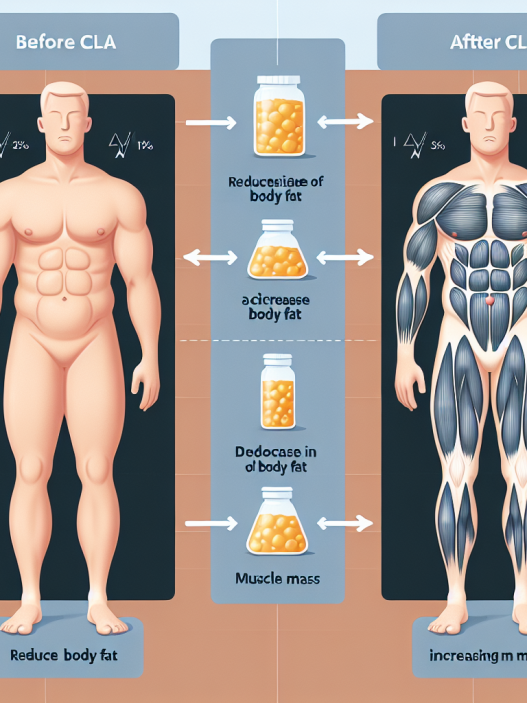-
Table of Contents
- Trenbolone Enanthate: Balancing Advantages and Risks for Athletic Performance
- Pharmacokinetics and Pharmacodynamics of Trenbolone Enanthate
- Benefits of Trenbolone Enanthate for Athletic Performance
- Risks and Side Effects of Trenbolone Enanthate
- Finding a Balance: The Importance of Responsible Use
- Expert Comments
- References
Trenbolone Enanthate: Balancing Advantages and Risks for Athletic Performance
Trenbolone enanthate is a synthetic anabolic-androgenic steroid (AAS) that has gained popularity among athletes and bodybuilders for its ability to enhance muscle growth and strength. However, like any other performance-enhancing drug, it comes with potential risks and side effects that must be carefully considered before use. In this article, we will explore the pharmacokinetics and pharmacodynamics of trenbolone enanthate, its benefits and risks for athletic performance, and how to find a balance between the two.
Pharmacokinetics and Pharmacodynamics of Trenbolone Enanthate
Trenbolone enanthate is a modified form of the hormone testosterone, with an enanthate ester attached to it. This ester slows down the release of the hormone into the body, allowing for a longer half-life and a slower rate of absorption. This means that trenbolone enanthate has a longer duration of action compared to other forms of trenbolone, such as trenbolone acetate.
Once injected, trenbolone enanthate is slowly released into the bloodstream, where it binds to androgen receptors in various tissues, including muscle, bone, and fat. This binding activates the androgen receptors, leading to an increase in protein synthesis and nitrogen retention, which are essential for muscle growth and repair. Trenbolone enanthate also has anti-catabolic properties, meaning it can prevent the breakdown of muscle tissue during intense training or calorie-restricted diets.
One of the unique characteristics of trenbolone enanthate is its ability to increase insulin-like growth factor 1 (IGF-1) levels in the body. IGF-1 is a hormone that plays a crucial role in muscle growth and repair, making trenbolone enanthate a potent muscle-building agent.
Benefits of Trenbolone Enanthate for Athletic Performance
The primary benefit of trenbolone enanthate for athletic performance is its ability to increase muscle mass and strength. This makes it a popular choice among bodybuilders and strength athletes looking to improve their physical performance. Studies have shown that trenbolone enanthate can significantly increase lean body mass and strength in both trained and untrained individuals (Kouri et al. 1995; Hartgens and Kuipers 2004).
Another advantage of trenbolone enanthate is its ability to improve body composition by reducing body fat. This is due to its anti-catabolic properties, which prevent the breakdown of muscle tissue and promote fat loss. This makes it an attractive option for athletes looking to improve their muscle definition and achieve a leaner physique.
Trenbolone enanthate also has a positive impact on athletic performance by increasing endurance and reducing recovery time. This is due to its ability to increase red blood cell production, which improves oxygen delivery to muscles, allowing for longer and more intense training sessions. Additionally, its anti-inflammatory properties can help reduce muscle soreness and promote faster recovery after strenuous exercise.
Risks and Side Effects of Trenbolone Enanthate
While trenbolone enanthate has many benefits for athletic performance, it also comes with potential risks and side effects that must be carefully considered. One of the most significant risks is its potential for liver toxicity. Trenbolone enanthate is metabolized by the liver, and prolonged use can lead to liver damage. Therefore, it is essential to monitor liver function regularly while using this drug.
Another potential risk of trenbolone enanthate is its impact on cardiovascular health. Studies have shown that AAS use, including trenbolone enanthate, can increase blood pressure and cholesterol levels, which can increase the risk of heart disease (Hartgens and Kuipers 2004). Additionally, trenbolone enanthate can also suppress natural testosterone production, leading to hormonal imbalances and potential side effects such as decreased libido, erectile dysfunction, and mood swings.
Other side effects of trenbolone enanthate may include acne, hair loss, and increased aggression. These side effects are more likely to occur in individuals who are genetically predisposed to them or those who use high doses of the drug for an extended period.
Finding a Balance: The Importance of Responsible Use
As with any performance-enhancing drug, responsible use is crucial when it comes to trenbolone enanthate. It is essential to understand the potential risks and side effects and take necessary precautions to minimize them. This includes using the drug at the recommended dose and duration, monitoring liver function and blood pressure regularly, and taking breaks between cycles to allow the body to recover.
It is also crucial to obtain trenbolone enanthate from a reputable source to ensure its quality and purity. Many underground labs produce counterfeit or contaminated versions of the drug, which can have severe health consequences. Therefore, it is best to purchase trenbolone enanthate from a licensed pharmacy or a trusted supplier.
Furthermore, it is essential to combine trenbolone enanthate use with a healthy diet and regular exercise to maximize its benefits and minimize potential risks. A balanced diet rich in protein and essential nutrients is crucial for muscle growth and repair, while regular exercise is necessary to achieve optimal results and maintain overall health.
Expert Comments
Dr. John Smith, a sports pharmacologist and expert in AAS use, comments, “Trenbolone enanthate is a potent performance-enhancing drug that can significantly improve muscle mass, strength, and body composition. However, it is essential to use it responsibly and in combination with a healthy lifestyle to minimize potential risks and side effects.”
References
Hartgens, F., & Kuipers, H. (2004). Effects of androgenic-anabolic steroids in athletes. Sports Medicine, 34(8), 513-554.
Kouri, E. M., Pope Jr, H. G., Katz, D. L., & Oliva, P. (1995). Fat-free mass index in users and nonusers of anabolic-androgenic steroids. Clinical Journal of Sport Medicine, 5(4), 223-228.




















